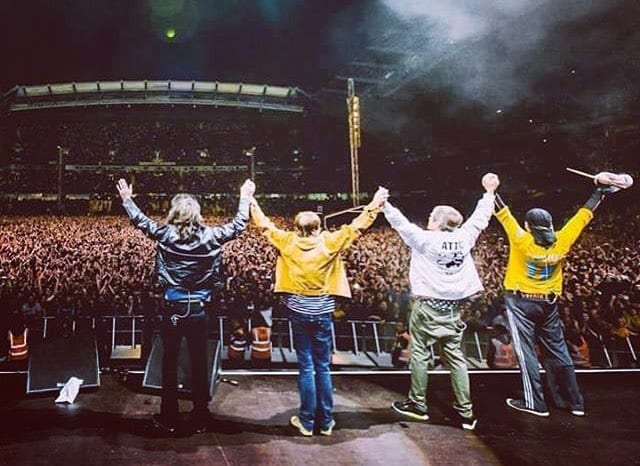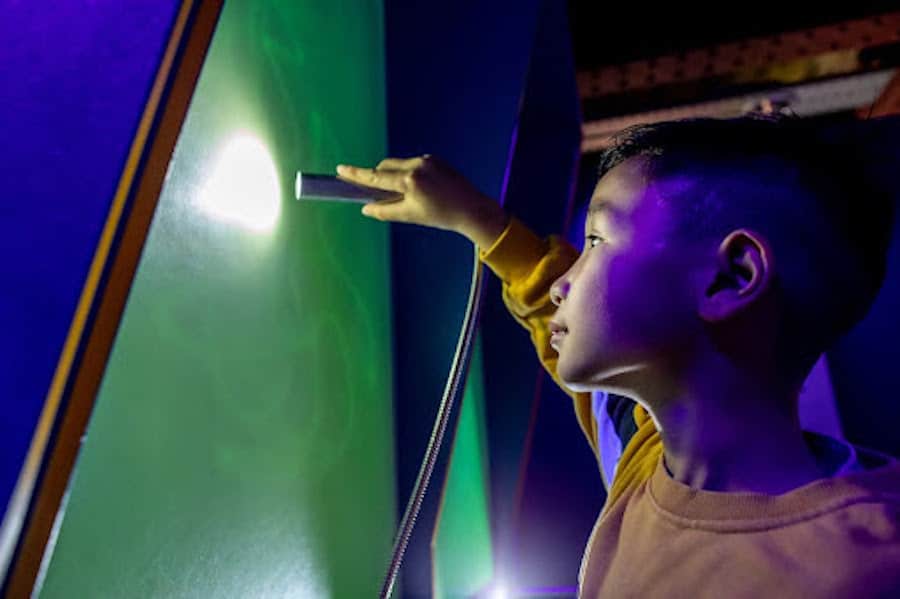Experience the roaring return of Life of Pi at The Lowry this July
- Written by Thom Bamford
- Last updated 9 months ago
- City of Salford, Sponsored, Theatre
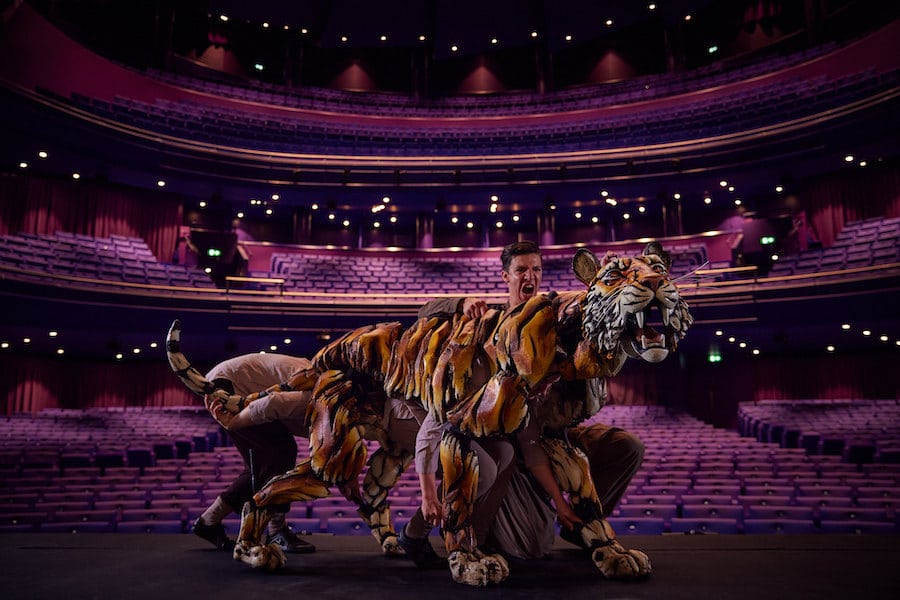
Due to popular demand this spectacular production is returning to The Lowry for one week only this summer.
The critically acclaimed show, featuring the life-size puppeteer Royal Bengal Tiger, ‘Richard Parker,’ will be wowing audiences again this July after a heroic run last winter.
Miss it first time around? Why not check out our review.
You can get your tickets to this amazing production by clicking here
Life of Pi – Yann Martel’s Masterpiece
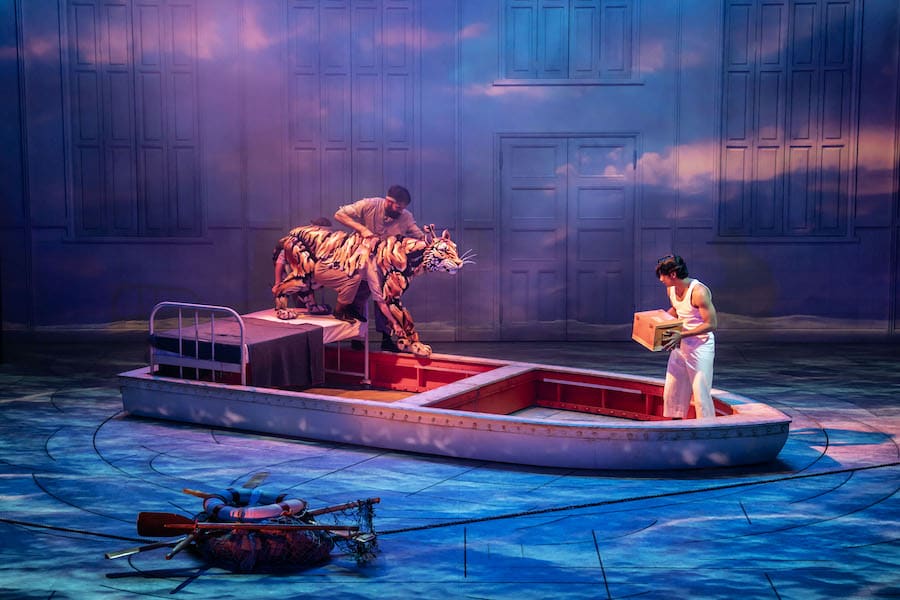
Life of Pi is an adaptation of Yann Martel’s Man Booker Prize-winning novel, a literary sensation that has sold over fifteen million copies worldwide.
Returning to The Lowry’s stage, this is a breathtaking theatrical experience that will immerse you in the incredible world of Pi and Richard Parker.
The Life of Pi
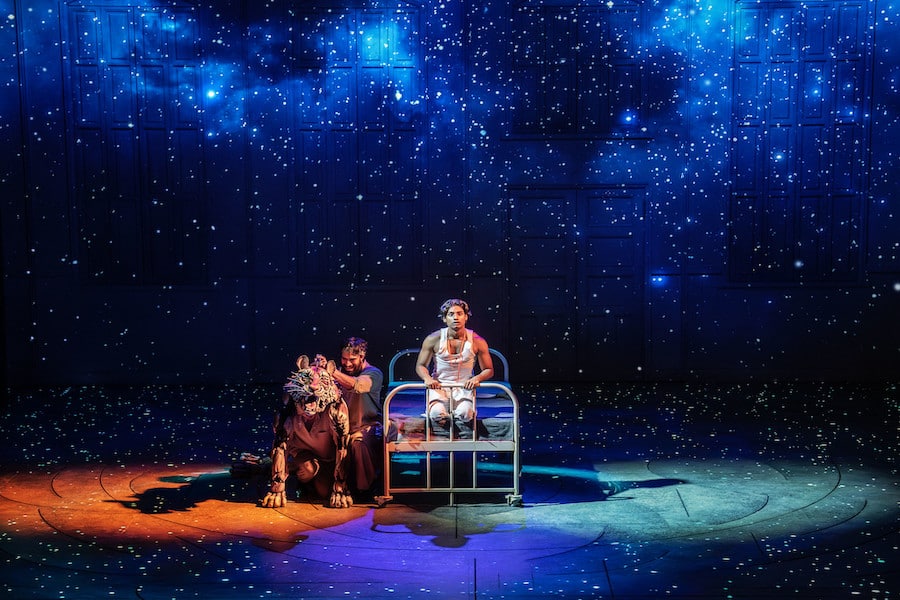
Based on the gripping narrative of the novel, Life of Pi unfolds after a devastating shipwreck leaves five survivors stranded on a lifeboat in the vast expanse of the Pacific Ocean.
Among them are a hyena, a zebra, an orangutang, a sixteen-year-old boy, and a formidable 450-pound Royal Bengal tiger named Richard Parker.
As they face the test of time and the relentless challenges of nature, the ultimate question arises: who will triumph against all odds?
Divesh Subaskaran as Pi
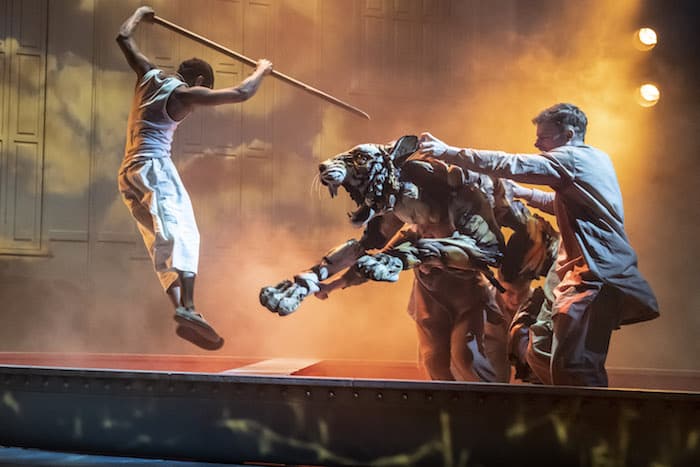
In the lead role of Pi is Divesh Subaskaran, making his professional debut, alongside a talented ensemble cast, including Antony Antunes, Adwitha Arumugam, Bhawna Bhawsar, Ralph Birtwell, Kriss Dosanjh, Sebastian Goffin, Akash Heer, Romina Hytten, Katie Kennedy-Rose, Aizah Khan, Chand Martinez, Keshini Misha, Goldy Notay, Sharita Oomeer, Kate Rowsell, Lilian Tsang, Peter Twose, and many others.
Originally debuting to critical acclaim at the Crucible Theatre in Sheffield in 2019, “Life of Pi” has since made its mark in North America and on Broadway.
Five Olivier Awards

It earned five prestigious Olivier Awards in April 2022, including Best New Play and Best Actor for Hiran Abeysekera, the original Pi.
The production also received accolades for its set and lighting design.
The Broadway premiere of Life of Pi was equally triumphant, securing Tony Awards in the categories of Best Scenic Design, Best Lighting Design, and Best Sound Design.
Max Webster’s Direction
Under the skilled direction of Max Webster, this remarkable show boasts a stellar creative team. Set and Costume Designer Tim Hatley, Puppet Designers Nick Barnes and Finn Caldwell, Puppet and Movement Director Finn Caldwell, Video Designer Andrzej Goulding, Lighting Designer Tim Lutkin, Sound Designer Carolyn Downing, Composer Andrew T Mackay, and Dramaturgy by Jack Bradley all contribute to this exceptional production.
Presented by Simon Friend in association with Playing Field and Tulchin/Bartner, “Life of Pi” is set to deliver an unforgettable theatrical experience, reaffirming its status as a modern theatre masterpiece.
Lolita Chakrabarti’s Vision

Lolita Chakrabarti, the visionary behind the adaptation, expresses her gratitude to Yann Martel for entrusting his remarkable story to her and the creative team.
In conversation with I Love MCR, Lolita reflects on what drew her to the novel and the challenges she faced during the adaptation process.
She emphasises the universal appeal of the story, tackling themes of struggle, suffering, survival, and hope that resonates with people of all ages. Lolita’s focus on relationships, storytelling, and emotional transformation ensures a powerful and immersive experience for the audience.
Speaking about her connection to the novel, Lolita said: “I think what drew me into the novel when I first read it back in 2002 is that I had no idea where it was going. I was drawn to the vastness of the story and its intense nature. It had a visceral quality that kept me engaged throughout. I had no idea where it was heading.
“The book’s ability to surprise and leave readers questioning what actually happened stayed with me. It left a lasting impression. So when I was approached to adapt it in 2016, I immediately knew it was something I wanted to do. There are very few books that have that kind of impact.
Regarding the adaptation process, Lolita explains: “I focused on the relationships, the storytelling, and the overall structure.
“Emotionally, there needs to be a complete shift from the beginning to the end. It’s quite a simple breakdown when you think about it. Then it’s about the characters, some of whom I altered in terms of gender or combined, in order to tell the story I envisioned.
Lolita believes that the story’s universal appeal lies in its exploration of struggle, suffering, survival, and hope.
She said: “These are experiences that everyone can relate to, regardless of age.
“From a young age, we learn to cope with pain and overcome challenges. As we grow older, our perspective on these experiences changes. Everyone has faced suffering, struggled, and survived to some extent.”
“Although the scale may differ, the play allows audiences to see themselves within it.
“Additionally, it explores themes of family and loss, which resonates with many people.
“The play itself has delightful moments, blending philosophy, humour, and storytelling. It immerses the audience in beautiful visuals and offers a variety of emotional elements.”
Finn Caldwell and the Art of Puppetry

One of the incredible elements of this production is the use of puppetry to bring Richard Parker, the imposing Bengal tiger, to life.
Finn Caldwell, the puppet movement director and co-designer, sheds light on the decision to employ this medium and its impact on the storytelling.
Explaining their choice, Finn shares: “We contemplated other possibilities, such as having one person in a suit representing the animal.
“You get the blank canvas of the stage, and the possibilities are endless. However, once Max Webster, the director, and I joined the project, the concept evolved.
“I can’t imagine it any other way now. The puppetry adds an element of unpredictability and creates an eerie and extraordinary atmosphere.”
“Puppetry works really well for talking about a story where you’re talking about making up stories.
“It adds that layer of ‘make-believe,’ which is a metaphor for Pi. You’re not quite sure if he’s telling the truth, and it leaves you to make up your mind about proceedings. Is it real or not?”

Finn emphasises the immense physicality exhibited by the actors in portraying their characters.
He said: “I’m a big believer in what Brecht said, that Theatre should be like football.
“Although I’m not personally a fan of football, I appreciate the intense passion that people bring to sports.
“The unreserved enthusiasm, energy, and dedication displayed by athletes is something I find truly exciting. In contrast, theatre often tends to be more reserved and polite. I believe we should embrace that same level of passion in our theatrical performances. When I used to perform, I felt that if the entire cast wasn’t a little sweaty by the end, it didn’t feel like we had truly given it our all.
“I wouldn’t really feel like we’d earned our money.
“What I’m trying to convey is that when actors engage in physically demanding actions while portraying emotionally rich stories, something incredibly powerful happens.
“Witnessing the body exert itself and strive to accomplish something physically challenging while conveying an emotional narrative creates a potent and impactful experience.
“You really feel the energy they are putting into things and that draws the audience in.”
Reflecting on the challenges faced during the production, Finn revealed: “The first one was the tiger. We needed to figure out how to make it appear frightening and fast. The second significant challenge arose in the second half when the story takes place at sea. We had to find a solution for that.”
Finn concluded: “To tackle these challenges, we relied heavily on exceptional set design, remarkable video work by Andre Goulding, and the collective commitment to imaginative storytelling. The combination of these elements, along with the presence of both the tiger and the boy engaging in physical theatre, transports us to a different world.”
With its gripping narrative, exceptional performances, and innovative use of puppetry, this adaptation promises an unforgettable journey of survival and imagination.
Tickets for The Life of Pi at The Lowry
Life of Pi returns to the Lowry Theatre from Tuesday 2nd July to Saturday 6th July.
And you can get your tickets by clicking here
- This article was last updated 9 months ago.
- It was first published on 27 October 2023 and is subject to be updated from time to time. Please refresh or return to see the latest version.
Did we miss something? Let us know: [email protected]
Want to be the first to receive all the latest news stories, what’s on and events from the heart of Manchester? Sign up here.
Manchester is a successful city, but many people suffer. I Love Manchester helps raise awareness and funds to help improve the lives and prospects of people across Greater Manchester – and we can’t do it without your help. So please support us with what you can so we can continue to spread the love. Thank you in advance!
An email you’ll love. Subscribe to our newsletter to get the latest news stories delivered direct to your inbox.
Got a story worth sharing?
What’s the story? We are all ears when it comes to positive news and inspiring stories. You can send story ideas to [email protected]
While we can’t guarantee to publish everything, we will always consider any enquiry or idea that promotes:
- Independent new openings
- Human interest
- Not-for-profit organisations
- Community Interest Companies (CiCs) and projects
- Charities and charitable initiatives
- Affordability and offers saving people over 20%
For anything else, don’t hesitate to get in touch with us about advertorials (from £350+VAT) and advertising opportunities: [email protected]

LOWRY’s Quays Theatre gets a plush new look thanks to award

What is the legacy of Manchester’s most controversial (and maybe best) novel?

Big Issue, bigger heart: Manchester comes together for Colin

